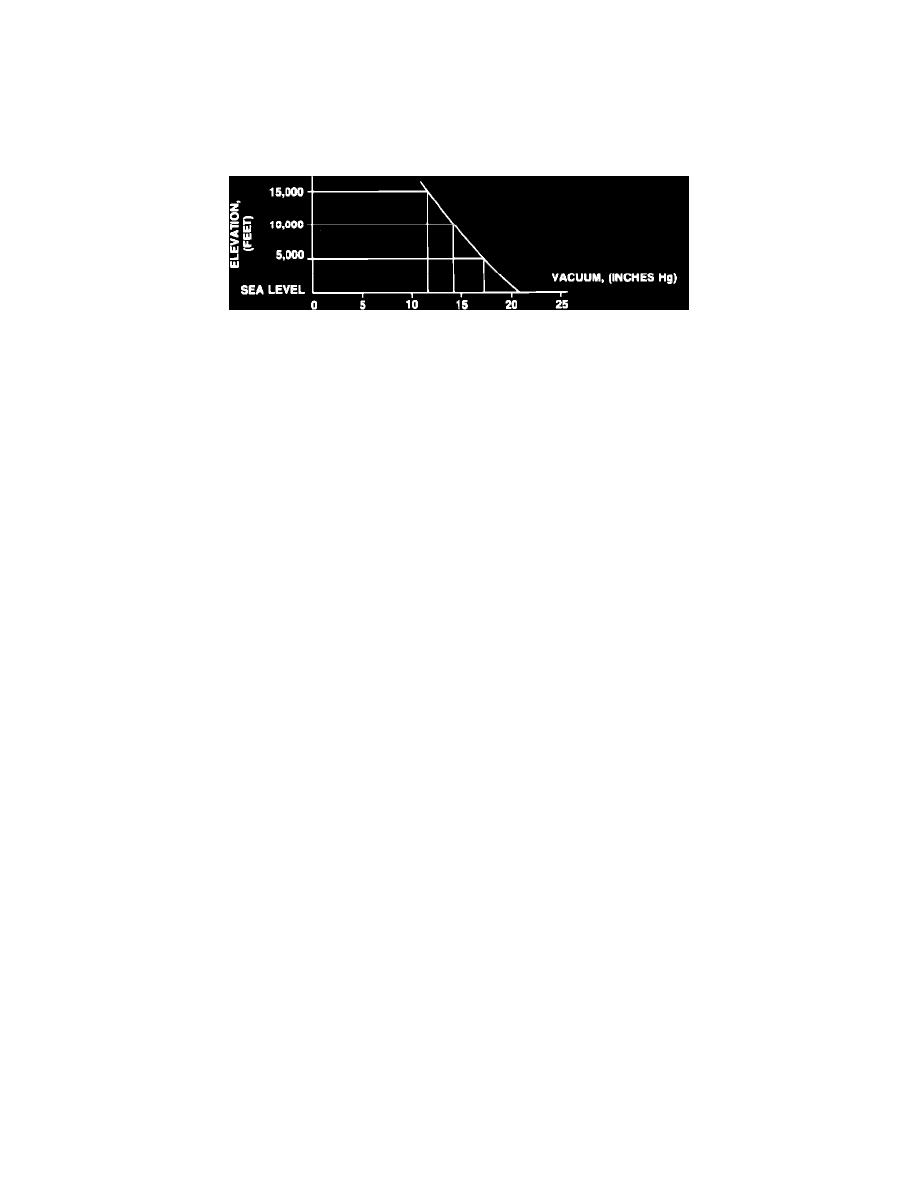K 2500 Truck 4WD V8-379 6.2L DSL VIN C FI (1989)

Vacuum Pump: Testing and Inspection
GEAR DRIVEN PUMP
1.
Start engine, then attach hose and vacuum gauge to pump. Gauge should read at least 20 inches Hg.
2.
Shut off engine. Vacuum level should remain above 19 inches Hg. for at least 1-1/2 seconds.
BELT DRIVEN PUMP
Fig. 1 Vacuum Chart
1.
Block wheels, apply parking brake, and place gear shift lever in P or N.
2.
Connect vacuum gauge to vacuum pump inlet (lower port).
3.
Disconnect outlet hose from outlet tube (upper port) and plug end of hose. Do not plug vacuum pump outlet tube.
4.
Start engine and run at idle. Vacuum should read as shown, Fig. 1, within 30 seconds.
5.
If vacuum is within specifications, proceed to step 8.
6.
If vacuum is below specification or gauge reading fluctuates, proceed as follows:
a.
Check gauge and connections for leaks, correcting as necessary.
b.
Check belt tension and pulley fit to pump, repairing or replacing as necessary.
c.
Check idle speed and correct as necessary.
7.
If vacuum is still below specifications or gauge still fluctuates, replace vacuum pump and repeat steps 1 through 6.
8.
If vacuum was within specifications in step 5 or step 7, proceed as follows:
a.
Remove plug from outlet hose and connect hose to pump outlet tube.
b.
Connect vacuum inlet hose to pump with a T-fitting and vacuum gauge located near pump inlet.
c.
Start engine and run at idle for one minute.
d.
If vacuum is three inches Hg. lower than in step four, vacuum pump is not defective.
e.
If vacuum is more than three inches Hg. lower than in step four, check all attaching hoses for leaks, correcting as necessary.
f.
If vacuum is still too low, check all vacuum accessories for leaks, repairing or replacing as necessary.
